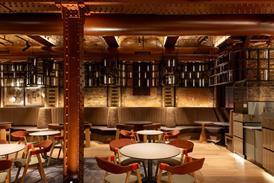If architects were prepared to let go of the shibboleths of the style wars they might find some unexpected allies, writes David Rudlin

I am a planner who trained with architects. It is a cruel and inhuman practice that has now been largely phased out. However back in the 1980s we planning students would be forced to work on our masterplanning projects while the architecture students who shared the same studio took the piss. Obviously there was a huge amount of ammunition that they were able to use: our questionable dress sense, our risible drafting skills, and our barely concealed megalomania as we laboured over plans for new towns. However they found a particular target in our use of pitched roofs.
As I recall we drew pitched roofs on our masterplans because they were a useful shorthand to denote a building and they also added a sense of depth to our drawings. However to the architects those pitched roofs were something altogether more sinister and political. They had been taught that modernism meant flat roofs and was socialist, whereas pitched roofs betrayed “critical regionalist” tendencies, were pastiche and reactionary. Indeed some of the bolder architect students went as far to say that pitched roofs were “imperialist crowns for buildings”. Those of you who were there in the 1980s, will recall that “Imperialist” was a serious accusation.

The memory of these political arguments, from what seems like a different age, live on in the debate that followed the Building Better, Building Beautiful Commission. It wasn’t just that architects feared that the commission was seeking to impose traditional design, it was a sense that traditional design was somehow right wing, socially conservative, middle-class and small-minded. Compared to this, contemporary architecture may no longer be socialist but is seen as progressive, liberal and open-minded.
It doesn’t help that one of Trump’s last acts was a presidential order mandating that all new federal buildings had to be “beautiful” and preferably “classical or traditional” in design. This was the culmination of a campaign by the US National Civic Art Society whose victory was short-lived as the order was rescinded within days of President Biden’s inauguration.
In the end the BBBB Commission didn’t wade into a fight about traditional design and its recommendations were largely welcomed by architects. However the issue lives on in the debate about visual preference surveys that purport to shows that traditional design is more popular and produces higher values than “contemporary” design. It’s not about ideology and aesthetics, you understand, but giving people what they want.
The report Of Streets and Squares published by Create Streets is probably the most rigorous empirical review of this field in the UK and does indeed seem to show that “traditional” design does better. However it is worth making two points about its findings.
The first is that the thing that it does better than is low-density suburbia. In other words, the aim is not to challenge modern architecture but the product of the volume housebuilders.
The second is that the definition of traditional design includes a grid of permeable streets, a variety of buildings fronting on to those streets, a mix of uses, degree of density and a sense of place and continuity. Traditional architecture is mentioned but most of the items on the list are just the principles of good urban design.
So does this mean that our student detractors were right and the urban design profession are all closet critical regionalists? A few years ago I was invited to Chicago to be a judge for awards of the Congress for the New Urbanism and was struck by the extent to which urban design and traditional architecture had become linked in the US. I don’t believe this is the case in the UK, indeed most of our best architects subscribe to the principles of urban design without feeling that it compromises their design ethos.
It has never been entirely clear to me why architectural style (as opposed to content) became so political. My plea is that, if we must play politics with style, please leave us urban designers out of it!
















5 Readers' comments